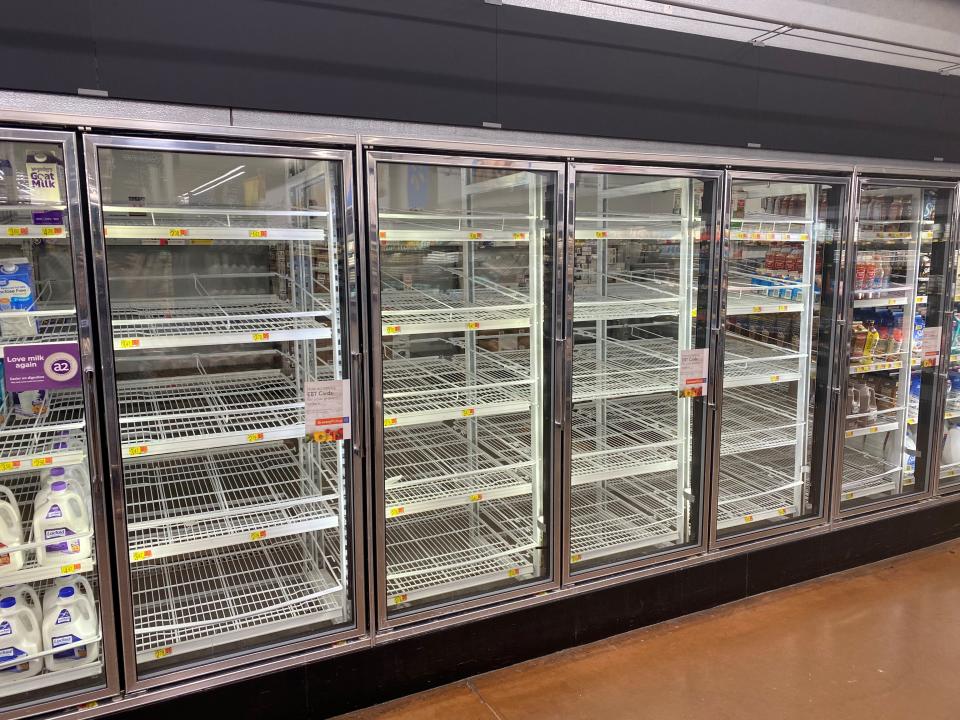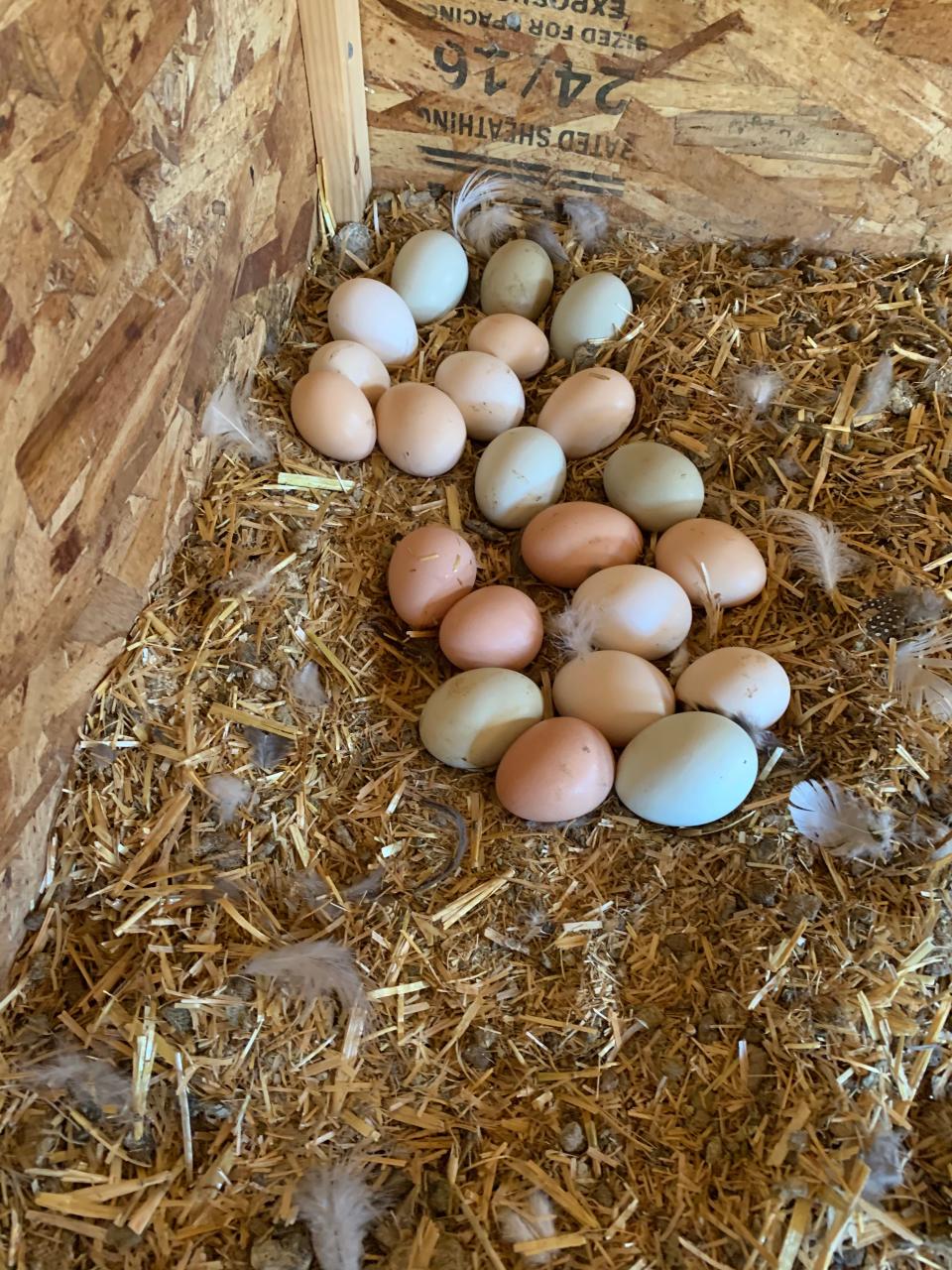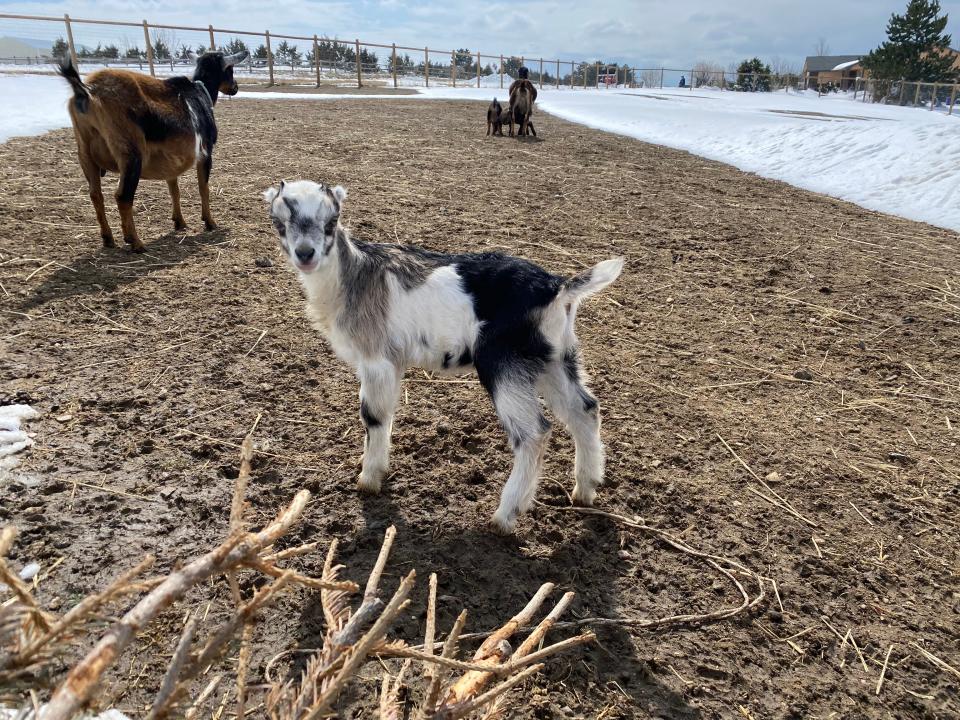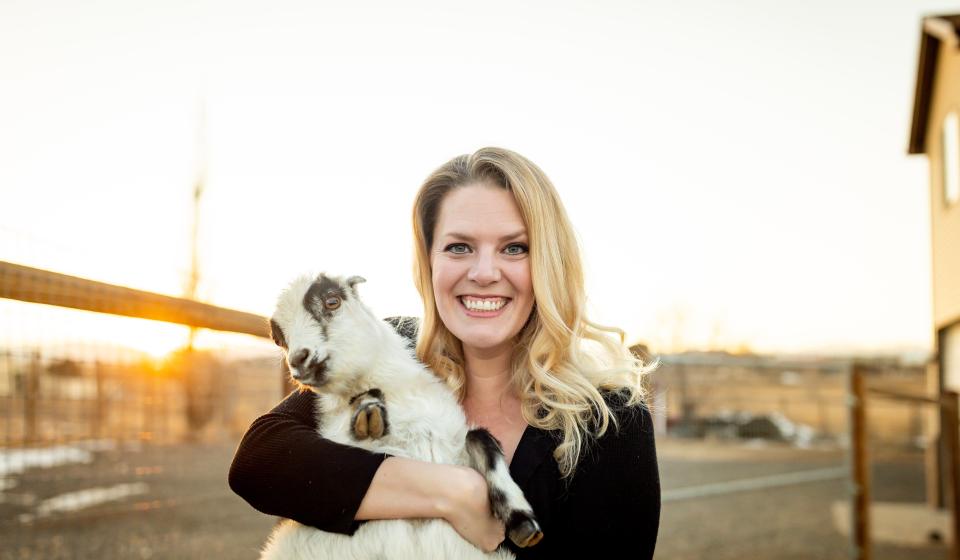My year as a subsistence farmer: The COVID-19 supply chain crisis reached even me
All it takes is a few minutes perusing social media to find a photo of empty store shelves. The asserted cause of such voids can vary from the political leadership to the rise of omicron, weather, labor, transportation disruptions, or even corporate greed.
Consumers across the country wonder, what would it take to exit the global supply chain? Is opting out even a choice?
In late October, there were almost two weeks where our large big-box grocery store had no cow milk on the shelves. Luckily, the dairy cases were fully stocked, and I am completely serious about this, with Fireball-flavored eggnog. So, if families got desperate, at least there was an alternative. "Happy Halloween. Please enjoy this glass of Fireball Eggnog."
Supply chain issues nationwide persist into the new year.
Grocery shopping was like looking for a needle in a haystack
Walking through a grocery store can feel stressful when confronted with seemingly random gaps in supply. Particularly for those who thrive with consistency, planning and routine, the inability to find specific products, like cream cheese, for instance, is jarring.
Catching COVID-19: I was the poster child for COVID-19 safety. Eventually, it got me.
Consumers across the country are looking for ways to insulate themselves from fluctuations in product availability. There's a reason home-baked sourdough bread became the carb-laden unofficial mascot for the lockdowns.
Closer to home, though, the supply chain breakdowns hit a little different for me. As an urban farmer, I'm less connected to the supply chain than most. On just under 4 acres nestled in the suburbs of Denver, we have a backyard flock of various poultry, pigs, a large garden, a greenhouse and a herd of dairy goats.
More Opinion: Get a daily digest of our best columns in your inbox

Six months before the start of the pandemic, one of my best friends dared me to live off what we produced on our small urban farm for an entire year. We were drinking a few glasses of wine, so it seemed like a good idea at the time.
Exiting the supply chain in a pandemic
Like an extreme version of subsistence living, I was allowed a few things: salt, cultures to make cheese and vinegar to ensure I could preserve food safely. If I wanted something that couldn't be produced on our farm or hunted, I had to find a source with whom to barter. This included a coffee grower in Hawaii, a friend with an avocado tree and another friend in California who makes wine. The overwhelmingly vast majority of my diet, though, came right from our yard.
I announced my intention to do this crazy dare in January 2020, with a start date scheduled for Aug. 1 to allow for the necessary lead time to prepare for such an undertaking. COVID-19 hit our community in earnest that March. Making preparations to exit the food supply chain at the start of the pandemic created unique challenges.
Initially, my motivation for accepting the year challenge was more midlife crisis-driven than worries about accessibility to products. However, the act of extricating and insulating myself from the offerings of grocery store shelves taught me just how complicated self-sufficiency can be. A society-wide supply chain exit would be almost impossible to achieve en masse.
Columnist Connie Schultz: Why aren't all of us having nightmares about the next Jan. 6? Next time may succeed.

One of the essential preparations for my challenge year was to expand our poultry operation. I already had chickens and ducks, but I needed to triple our numbers for enough eggs and meat.
But as soon as the pandemic started and sporadic egg availability hit stores – chicks were gone. They vanished from feed stores and the mail-order chick hatcheries. People at home in lockdown all seemed to start backyard chicken projects simultaneously. The demand skyrocketed, and suppliers couldn't keep up.
Tom Watkins, the owner of McMurray Hatchery, a nationwide supplier of mail-order chicks, told me, "During times of economic downturn or instability, people buy more chickens. Chickens are a comfort item."
Although it's odd to think of chickens like security blankets, it makes sense. "When people go to the store to get flour and eggs – the staples – and there are no eggs on the shelves, next they go to the source. It gives people a sense of control," Watkins said.
The increased demand can be sustaining. The first day of chick sales for deliveries in 2022 was another record setter for the company, "It's not just first-time chicken buyers this time," Watkins added. "Returning customers are coming back with greater frequency."
Eggs, seeds and incubators
With chicks scarce, I did what anyone who needed a lot of chickens to take their food supply offline would do – I incubated my own eggs. But guess where many home-use incubators are manufactured? China. For months incubators, too, were impossible for me to find as people who couldn't get chicks also decided to hatch their own.
Chickens were only one in the series of challenges I faced in exiting the food supply chain at a time when self-sufficiency interest gained national steam.
Thinking big picture: Joe Biden has had a rocky year in office. But, folks, this is only the first quarter.

Plants are no different. Seed companies faced unprecedented outages, and seedlings at garden and hardware stores were picked over across the country. Last week, attempting to buy seeds for my spring garden indicates that the supplies have not fully caught up to demand.
Other inputs are facing similar shortages. The same bag of grain for my goats that cost me $12.99 a year ago is already over $20 at the feed store. The inputs of microagriculture are as susceptible to supply issues as everything else in the economy.
Labor and services, too, are strained. As major slaughterhouses paused production with COVID-19, people everywhere started to look for workarounds. Independent butchers in Colorado were booked over a year out for scheduling.
Supply and demand: Real 'supply chain crisis' is shortage of companies treating truck drivers with respect
In addition to toilet paper and cleaning supply shortages, the glass jars used in home canning for food preservation were gone. Chest freezers sold out. Harvest Right, supplying small-scale freeze dryers for homes, was back-ordered for months when I tried to order. Slowly, the market for tools necessary to insulate oneself from supply chain fluctuations has started to normalize. However, increased interest in self-sufficiency will surely continue as long as there are shortages at grocery stores.
You never leave 'Hotel California'
Those tools to exit the supply chain are themselves part of another supply chain subject to the exact same forces. Exiting the supply chain is like leaving the Eagles' "Hotel California."
I tested positive for COVID. Do I have to tell people? How do I tell them?

If these issues persist, even more people will start looking to reclaim agency through creation. The strain on the secondary "supply chain exit supply chain" underscores the significant challenges we face when major societal shifts occur.
The upshot of the year challenge is that I made it and fed myself for an entire year – and in living off our farm, I found pieces of my soul I didn't even know were there. A special kind of gratification comes from creating the deliciously tangible, and I'll never be the same again.
I welcome all the newcomers to join me in insulating themselves from the oscillations of supply chain issues. Just don't all come at once.
Kelly Maher is an urban farmer and commentator north of Denver. She writes about life on her small farm at her Substack: "RealBestLife."
You can read diverse opinions from our Board of Contributors and other writers on the Opinion front page, on Twitter @usatodayopinion and in our daily Opinion newsletter. To respond to a column, submit a comment to letters@usatoday.com.
This article originally appeared on USA TODAY: Supply chain crisis: Living off my farm isn't as easy as it sounds

